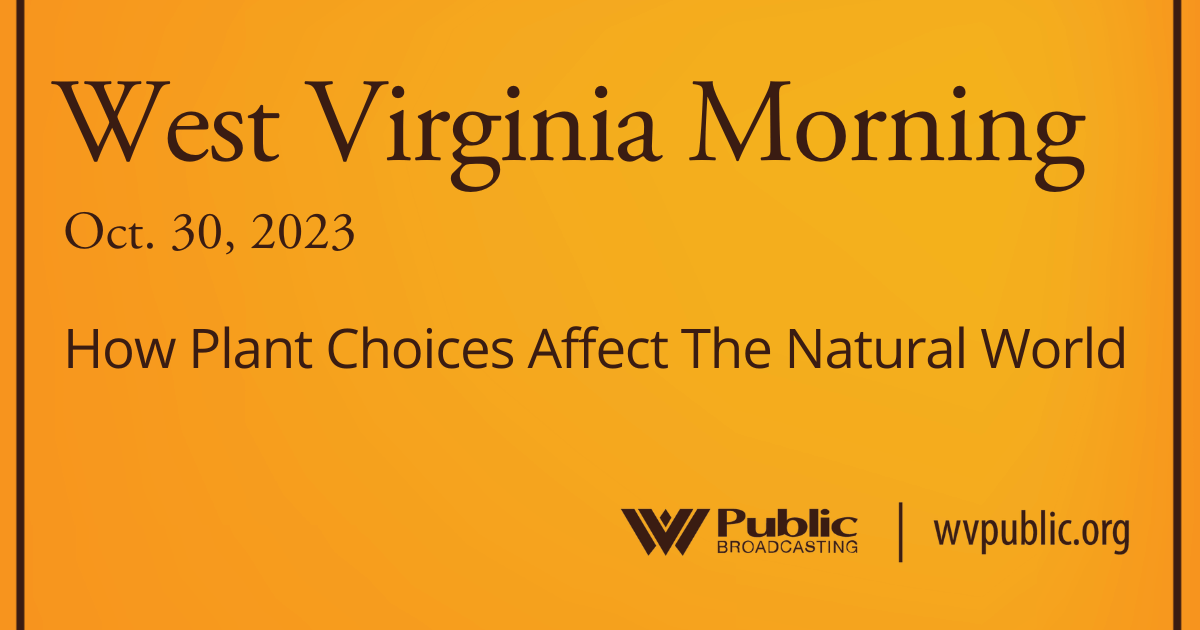Thousands of people have found themselves working from home during the coronavirus pandemic. Of course, essential workers don’t have that luxury. But that’s not the only type of work that can’t be done from home.
Scientists across the country have struggled to maintain access to their research, including researchers who take care of living collections — those libraries of living things, usually housed at academic institutions, and used for study or preservation.
West Virginia University is home to an important collection of living fungi. These are especially useful in West Virginia, because they can help plants grow on former mining sites.
“We spend a lot of time restoring lands that have been used for mining. And these fungi help plants colonize those lands,” said Matt Kasson, associate professor of plant pathology at WVU and the scientist who oversees this collection.
Kasson said these fungi help restore former mine lands.
“These lands are often depleted of nutrients,” he said. “Plants don’t often find it a hospitable environment to grow in. Through this partnership with these fungi, the site’s become more hospitable because these fungi are able to secure nutrients that plants otherwise themselves couldn’t extract.”
Kasson and his lab grow more than 900 individual strains of these fungi called INVAM, which, according to WVU, is the world’s largest collection of arbuscular mycorrhizal fungi — these are fungi that have formed an intimate, beneficial partnership with plant roots.
For the fungi to flourish, each individual strain must be partnered with a plant host, and maintained in a greenhouse for several months to a year. WVU’s space can only culture about 250 to 300 strains at a time, and they must be watered daily.
But we’re also in a public health pandemic, which has made it harder for scientists like Kasson to meet the needs of these fungi.
He and his team had to work with WVU to defend their status as essential workers. They also had to figure out how to get personal protective equipment, decrease the number of people in the lab, and alter their travel routes within the building in order to continue doing their work.
They also saw a huge decline in orders from potential buyers, like other academic institutions, organizations and entities that purchase the fungi to use them.
“We have shut down that aspect of the collection since March. So anyone who wanted to purchase strains have not been able to so,” he said. “We’re not sure when we’re going to start that back up.”
As of last week, though, Kasson and his team have been able to start fulfilling orders again after a decline by 70 percent compared to this time last year.
Kasson said they weren’t able to fulfill orders until now, because they couldn’t begin new cultures. But he also said they didn’t see many orders come in as most institutions that would want to purchase these fungi have been closed due to the pandemic.
But these fungi also appear naturally in nature, so why is it important to keep them alive in labs like WVU’s? Kasson said it’s to ensure diversity, and because of the uncertainty caused by climate change.
“As we deal with the impacts of climate change, and we lose land that is more suitable for growing crops, and we have to move towards less suitable lands, these fungi can make a real difference,” he said.
As we continue to face the coronavirus pandemic as a state, nation and globe, Kasson said it’s important for scientists to be able to access their research, as we never know where the next big discovery will come from.
“With regard to medicine, right now we’re in a pandemic, and a lot of people are working on vaccines, and there’s a lot of great scientists leveraging a lot of collections and things like that. And I think it’s really important to know that there’s a lot of potential in these collections that have yet to come to the surface, and that’s one of the reasons we need to maintain them.”
